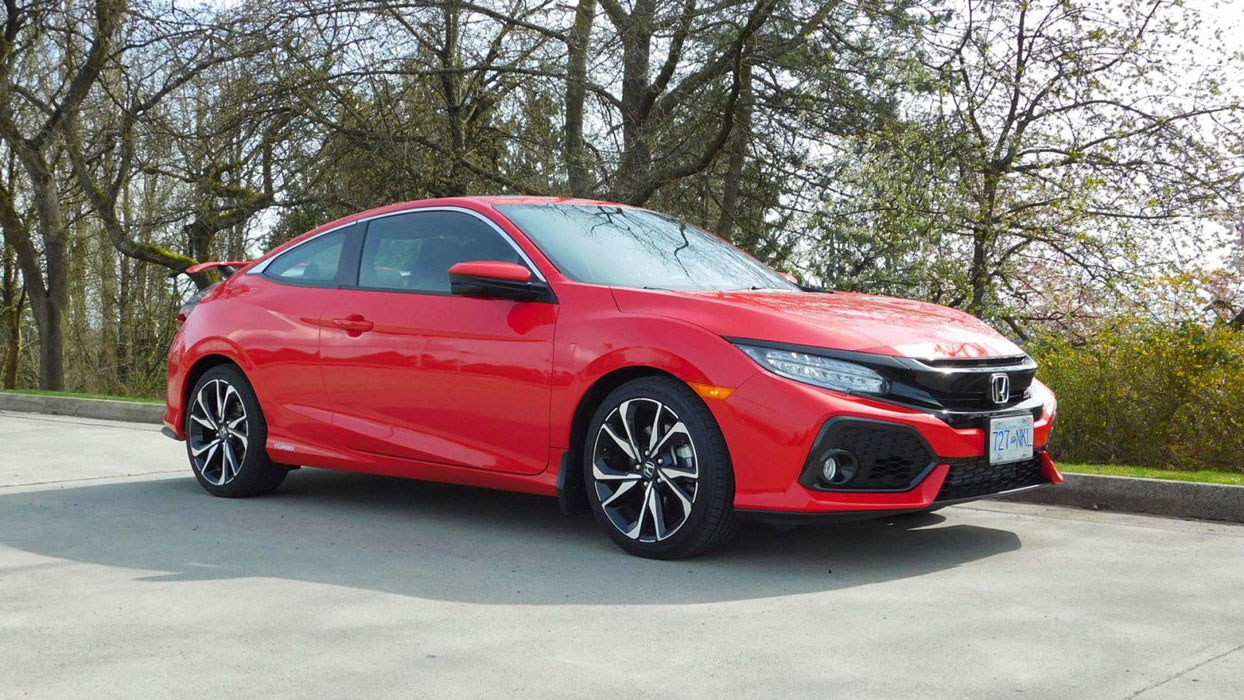The Honda Civic is a popular compact car, and its production has spanned several decades. Here’s a brief overview of the production years for the Honda Civic:
First Generation (1972-1979):
The Honda Civic was first introduced in 1972 as a subcompact car. It was available as a 2-door or 3-door hatchback, and its production continued until 1979.
Here are some key details about this initial generation of the Honda Civic:
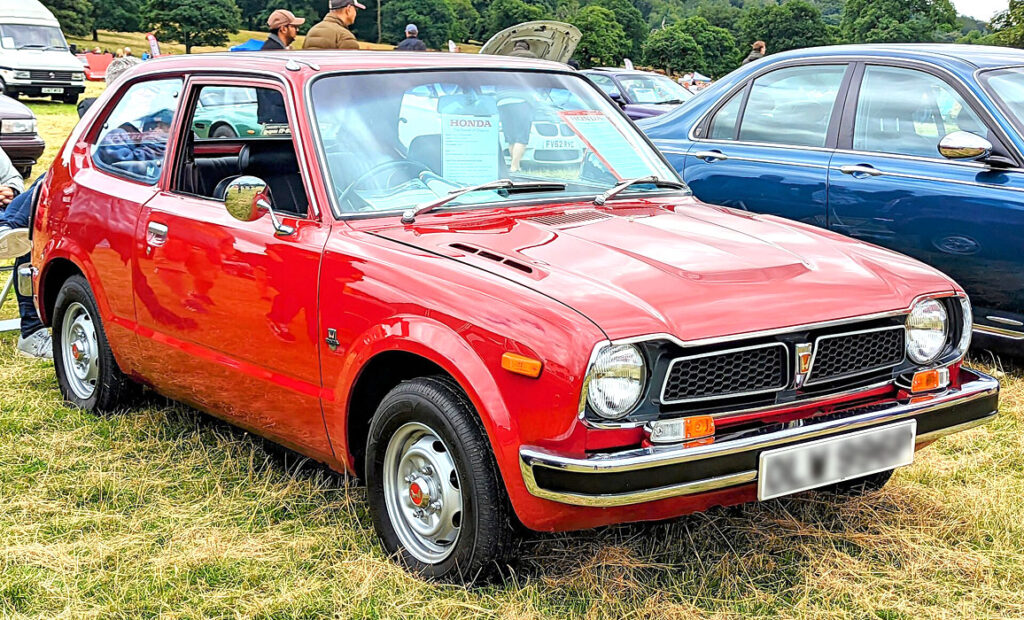
- Introduction: The Honda Civic made its debut in July 1972 as a subcompact car. It was designed to be fuel-efficient, reliable, and affordable, making it well-suited for the needs of the time.
- Body Styles: The first-generation Civic was initially available as a two-door and four-door sedan. Later in the generation, a three-door hatchback was also introduced.
- Engine: Early models were equipped with a 1.2-liter four-cylinder engine, and later versions had a 1.3-liter engine. These engines were known for their fuel efficiency.
- Transmission: A manual transmission was the standard option, but an automatic transmission was also available.
- Fuel Efficiency: One of the main selling points of the first-generation Civic was its excellent fuel economy, which was highly desirable during the 1970s oil crisis.
- Innovations: The first-generation Civic featured innovations like front-wheel drive and a flat cabin floor, providing more interior space.
- Global Success: The Honda Civic’s reputation for reliability and fuel efficiency helped it gain popularity not only in Japan but also in international markets.
- Safety: This generation was basic in terms of safety features, reflecting the standards of its time. Later generations would incorporate more advanced safety technology.
- Legacy: The success of the first-generation Civic laid the foundation for the Civic’s ongoing popularity and evolution into one of the best-selling compact cars worldwide.
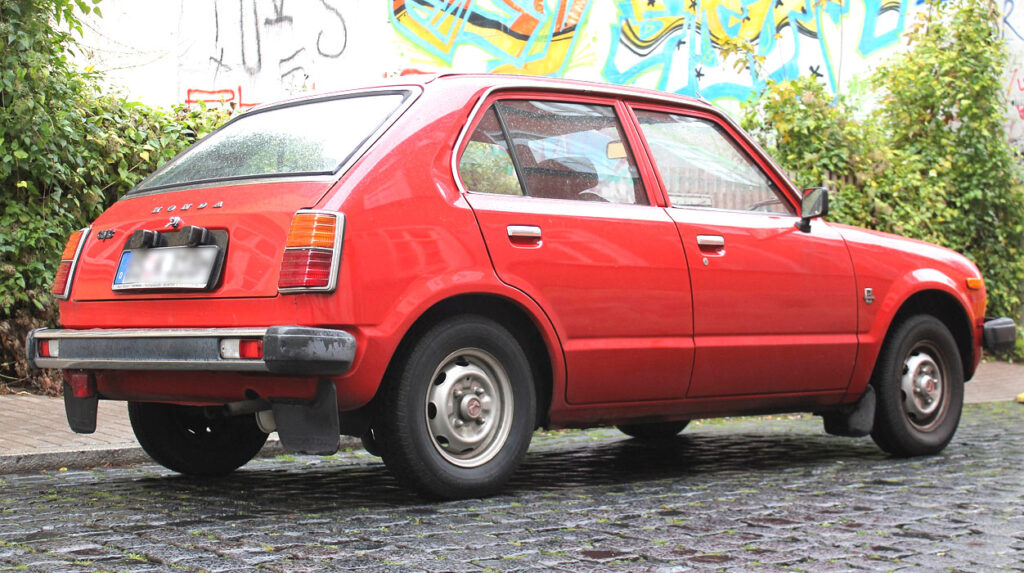
Overall, the first-generation Honda Civic was a small, practical, and efficient vehicle that established Honda’s reputation for producing reliable and economical cars. It set the stage for subsequent generations of the Civic, which would continue to evolve and become one of the most recognizable and respected names in the automotive industry.
Second Generation (1980-1983):
The second-generation Civic was produced from 1980 to 1983. It featured updated styling and was available as a 3-door hatchback, 4-door sedan, and a 5-door wagon.
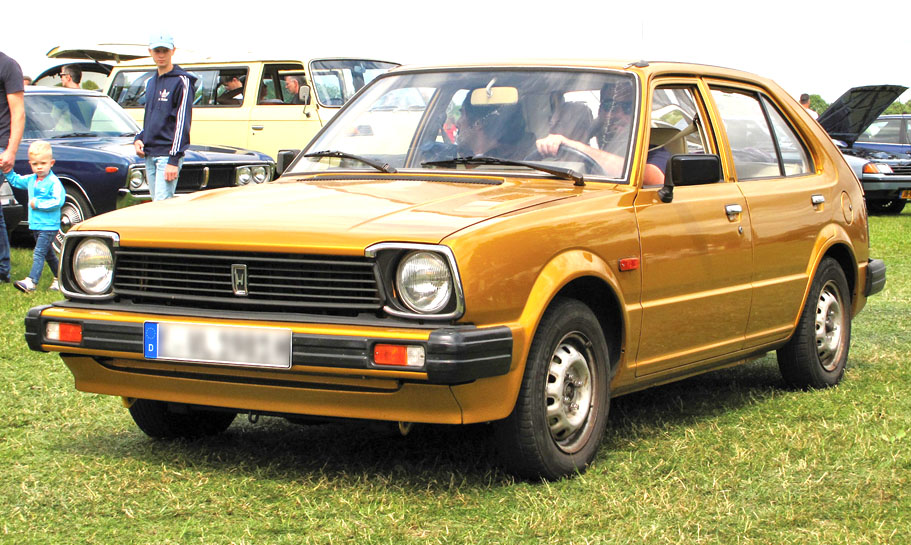
The second generation of the Honda Civic was produced from 1980 to 1983. Here are some key details about this generation:
- Redesigned Exterior: The second-generation Civic featured a redesigned exterior compared to the first generation. It had a more modern and aerodynamic look with updated styling.
- Body Styles: This generation was available in various body styles, including two-door and four-door sedans, as well as a three-door hatchback.
- Engines: Depending on the market, engine options included 1.3-liter and 1.5-liter four-cylinder engines. These engines were known for their fuel efficiency and reliability.
- Transmission: Both manual and automatic transmissions were available, offering a range of options to buyers.
- Fuel Efficiency: The second-generation Civic continued the tradition of being fuel-efficient, which was a significant selling point during the energy-conscious 1980s.
- Safety: While safety features were still relatively basic by modern standards, this generation did see some improvements in terms of safety equipment compared to its predecessor.
- Interior: The interior was designed to provide more comfort and space for passengers. It featured a user-friendly dashboard layout.
- Global Expansion: The success of the Civic continued to expand globally during this generation, with Honda exporting more cars to international markets.
- Innovations: Honda continued to innovate during this generation, with features like independent rear suspension for improved ride quality.
- Legacy: The second-generation Civic maintained the Civic’s reputation for being a reliable and economical choice for consumers, further solidifying Honda’s position in the automotive industry.
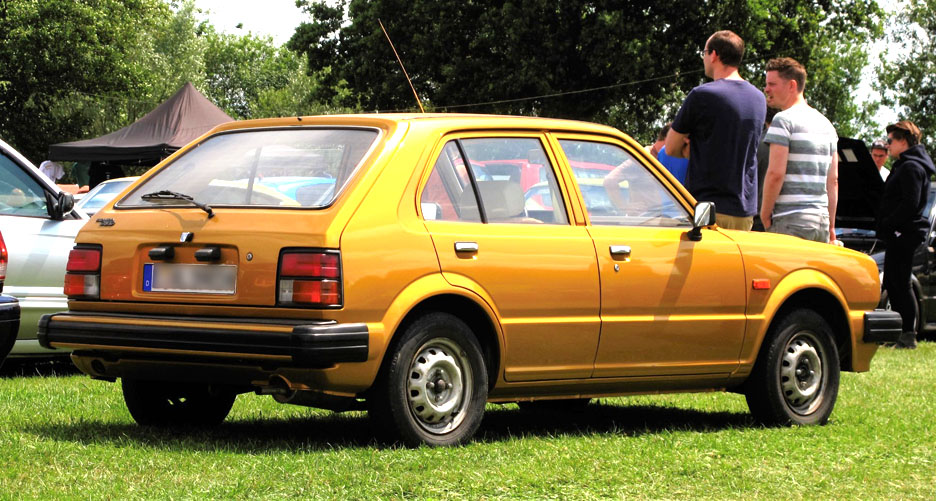
This generation of the Honda Civic helped solidify its position as a dependable and efficient compact car. It continued to be popular both in Japan and in international markets, laying the foundation for future generations of the Civic, which would see further advancements in design, technology, and safety features.
Third Generation (1984-1987):
This generation ran from 1984 to 1987 and saw the introduction of the Civic Si, a sportier version of the car. It was available in various body styles.
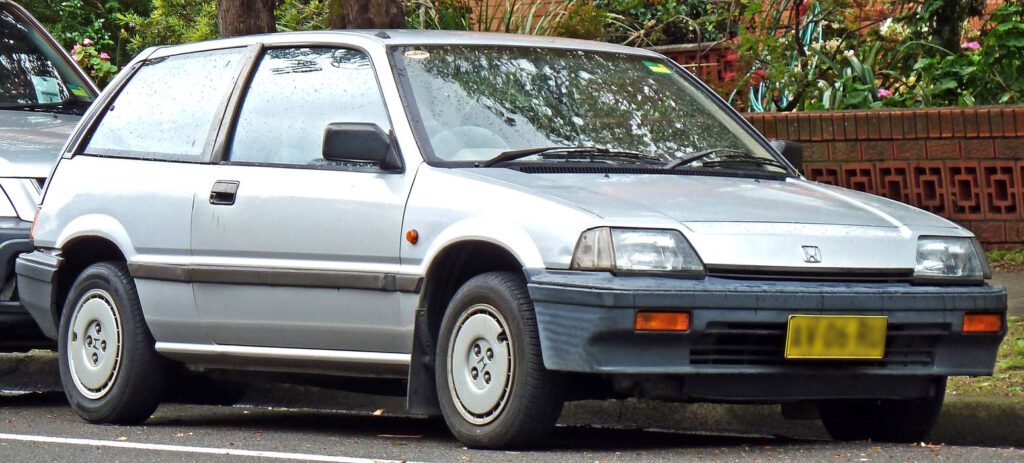
The third generation of the Honda Civic was produced from 1984 to 1987. Here are some key details about this generation:
- Redesigned Exterior: The third-generation Civic featured a more modern and streamlined exterior design compared to its predecessor. It had a smoother and more aerodynamic appearance.
- Body Styles: This generation was available in several body styles, including two-door and four-door sedans, a three-door hatchback, and a four-door wagon.
- Engines: Depending on the market, engine options included a 1.3-liter, a 1.5-liter, and a 1.6-liter four-cylinder engine. These engines were designed for improved performance and fuel efficiency.
- Transmission: Manual and automatic transmissions were available, providing flexibility for buyers.
- Fuel Efficiency: The third-generation Civic continued to emphasize fuel efficiency, which was a significant selling point during this era of high fuel prices and environmental concerns.
- Interior: The interior of this generation was more spacious and comfortable compared to previous models. It featured an updated dashboard design and improved materials.
- Technology: This generation saw the introduction of more advanced technology features, including electronic fuel injection (EFI) in some models.
- Safety: Safety features continued to evolve, with some models offering features like power-assisted steering and improved structural safety.
- Global Success: The third-generation Civic continued to be popular in both domestic and international markets, contributing to Honda’s global expansion.
- Sportier Variants: During this generation, Honda introduced sportier variants of the Civic, such as the Civic Si, which offered enhanced performance and handling.
- Legacy: The third-generation Civic further solidified Honda’s reputation for producing reliable, efficient, and well-designed compact cars. It was well-received by consumers and automotive enthusiasts alike.
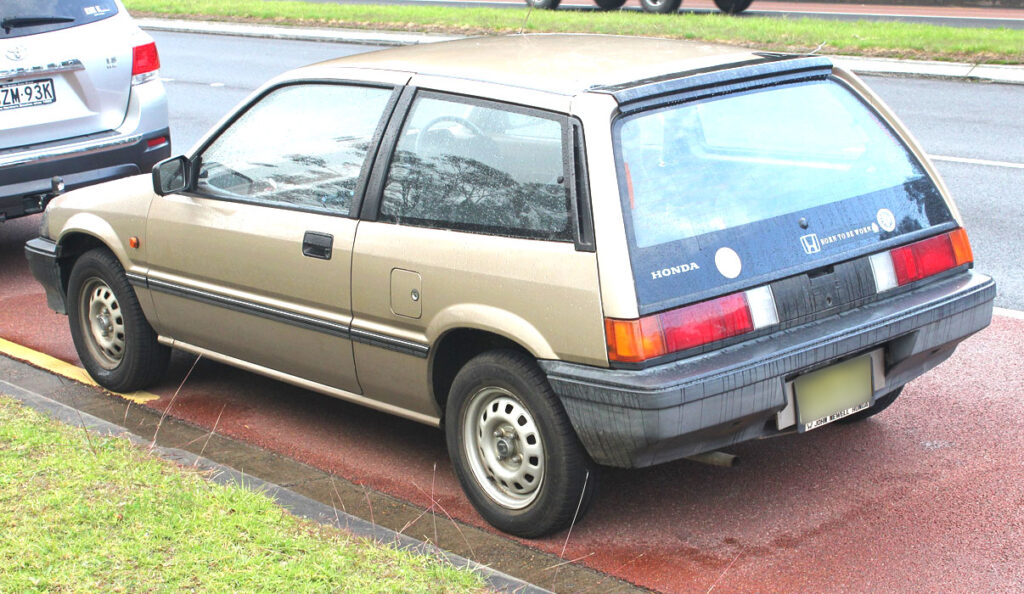
This generation of the Honda Civic marked another step forward in terms of design, performance, and technology. It continued to build on the Civic’s reputation as a dependable and economical choice, setting the stage for future generations that would further innovate in various aspects of automotive design and engineering.
Fourth Generation (1988-1991):
The fourth-generation Civic was produced from 1988 to 1991. It continued to offer a range of body styles and trim levels.
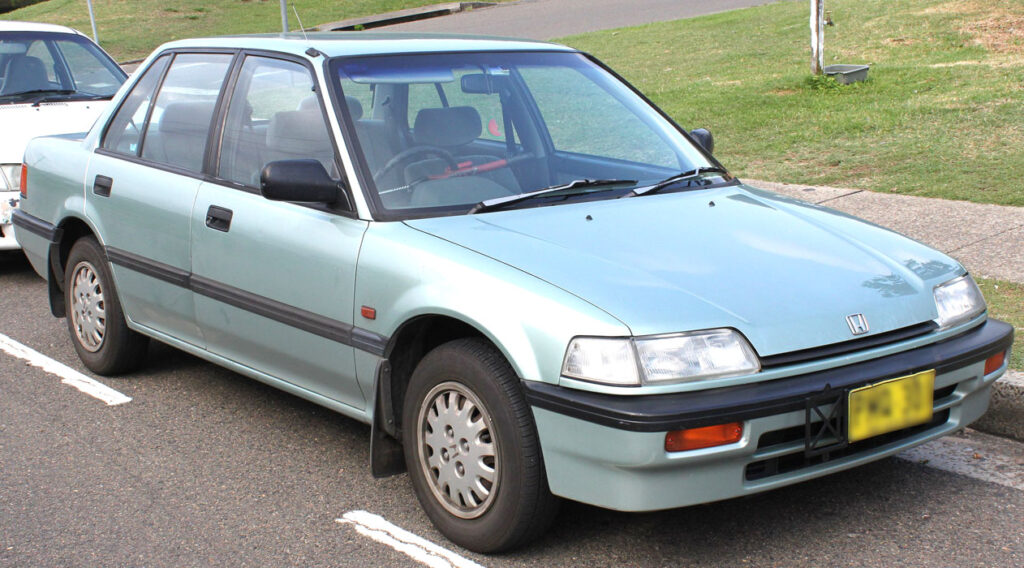
The fourth generation of the Honda Civic was produced from 1988 to 1991. Here are some key details about this generation:
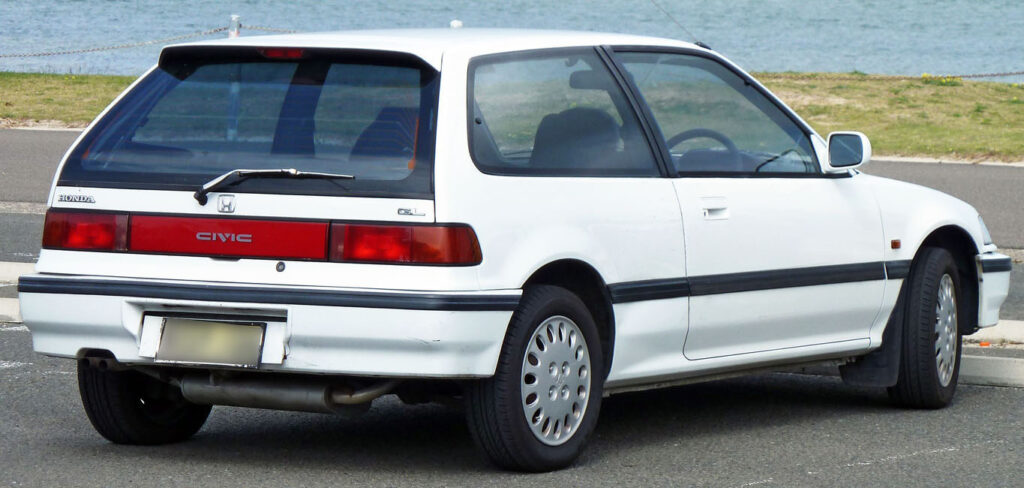
- Redesigned Exterior: The fourth-generation Civic featured a redesigned and more aerodynamic exterior compared to its predecessor. It had a more modern and rounded appearance.
- Body Styles: This generation was available in various body styles, including two-door and four-door sedans, a three-door hatchback, and a four-door wagon.
- Engines: Depending on the market, engine options included a range of four-cylinder engines, including a 1.2-liter, a 1.3-liter, a 1.5-liter, and a 1.6-liter engine. These engines were designed for improved fuel efficiency and performance.
- Transmission: Both manual and automatic transmissions were available, providing options for buyers.
- Fuel Efficiency: Fuel efficiency remained a key focus, and the fourth-generation Civic continued to offer good gas mileage.
- Interior: The interior of this generation featured improved materials and more comfortable seating. It had a user-friendly dashboard layout.
- Safety: Safety features continued to evolve, with some models offering anti-lock brakes (ABS) and improved structural safety.
- Technology: This generation saw advancements in technology, including the introduction of fuel injection systems and electronic engine control.
- Global Success: The fourth-generation Civic continued to be popular in domestic and international markets, further contributing to Honda’s global presence.
- Innovations: Honda introduced innovations such as double-wishbone suspension in the front and rear, which improved ride and handling.
- Special Models: During this generation, Honda introduced special models like the Civic CRX, a sporty two-seater hatchback known for its agility and fuel efficiency.
- Legacy: The fourth-generation Civic continued to build on Honda’s reputation for producing dependable and efficient compact cars. It was well-received by consumers and continued to establish Honda as a significant player in the automotive industry.
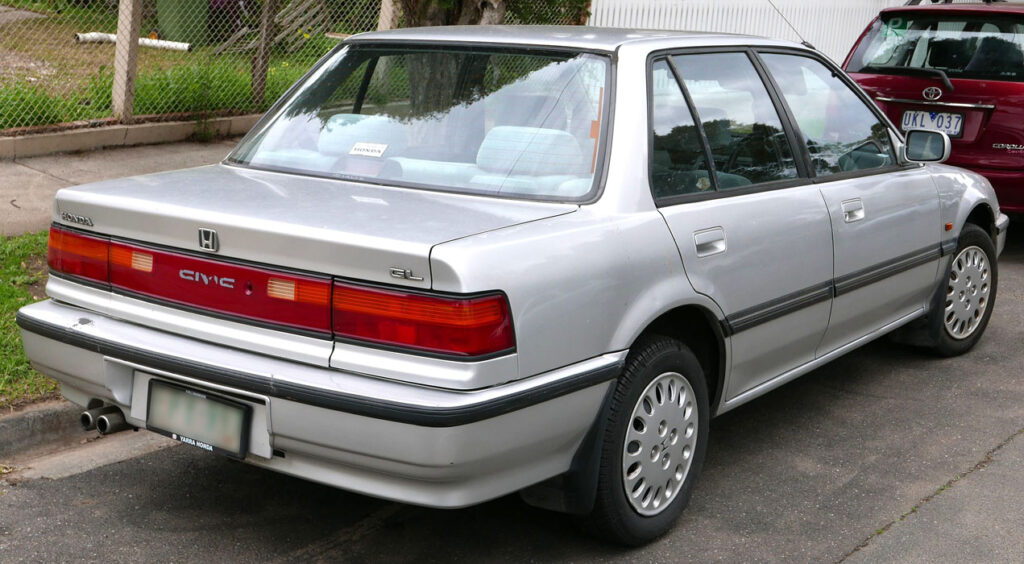
This generation of the Honda Civic marked a significant step forward in terms of design, technology, and performance. It continued to uphold the Civic’s reputation as a reliable and economical choice while introducing innovations that enhanced its appeal to a wide range of consumers.

***Download repair manual FREE***





Manual HONDA CIVIC 88 (TH)(PDF)
Fifth Generation (1992-1995):
The fifth-generation Civic was manufactured from 1992 to 1995 and included notable models like the Civic Coupe and the performance-oriented Civic SiR.
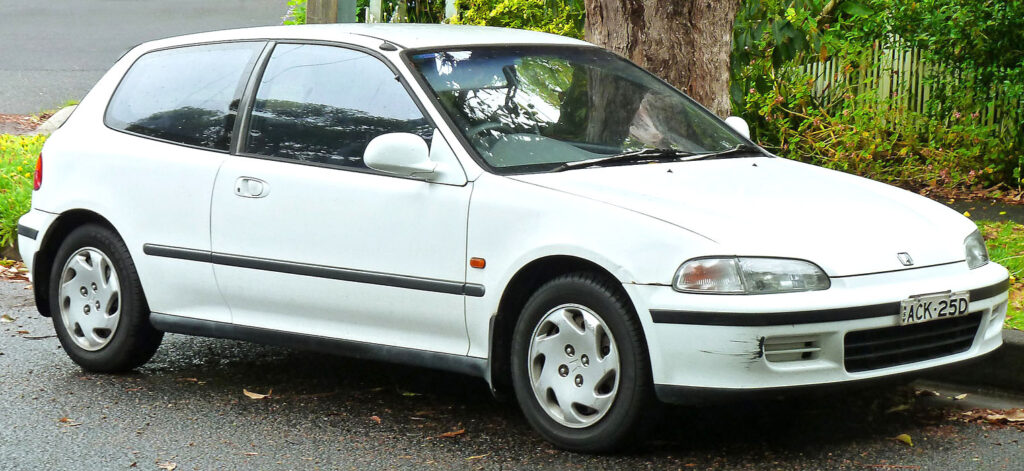

The fifth generation of the Honda Civic was produced from 1992 to 1995. Here are some key details about this generation:
- Redesigned Exterior: The fifth-generation Civic featured a more modern and aerodynamic exterior design compared to its predecessor. It had a sleek and curved appearance.
- Body Styles: This generation was available in various body styles, including two-door and four-door sedans, a three-door hatchback, and a two-door coupe.
- Engines: Engine options included a range of four-cylinder engines, including a 1.5-liter and a 1.6-liter engine. Some markets also had more powerful VTEC (Variable Valve Timing and Lift Electronic Control) engine options.
- Transmission: Both manual and automatic transmissions were available, offering a choice for buyers.
- Fuel Efficiency: The fifth-generation Civic continued to emphasize fuel efficiency, and it offered competitive gas mileage.
- Interior: The interior of this generation featured improved materials and a more ergonomic design. It provided a comfortable and spacious cabin for passengers.
- Safety: Safety features improved during this generation, with some models offering dual airbags and anti-lock brakes (ABS).
- Technology: Honda introduced technological advancements, including the VTEC engine technology that improved performance and efficiency.
- Global Success: The fifth-generation Civic continued to be popular in domestic and international markets, contributing to Honda’s global presence.
- Innovations: This generation introduced innovations like double-wishbone suspension for improved handling and ride comfort.
- Special Models: Honda offered sportier variants of the Civic during this generation, including the Civic Si, known for its performance enhancements.
- Legacy: The fifth-generation Civic continued to uphold Honda’s reputation for producing reliable, efficient, and well-designed compact cars. It appealed to a wide range of consumers and contributed to the Civic’s enduring popularity.
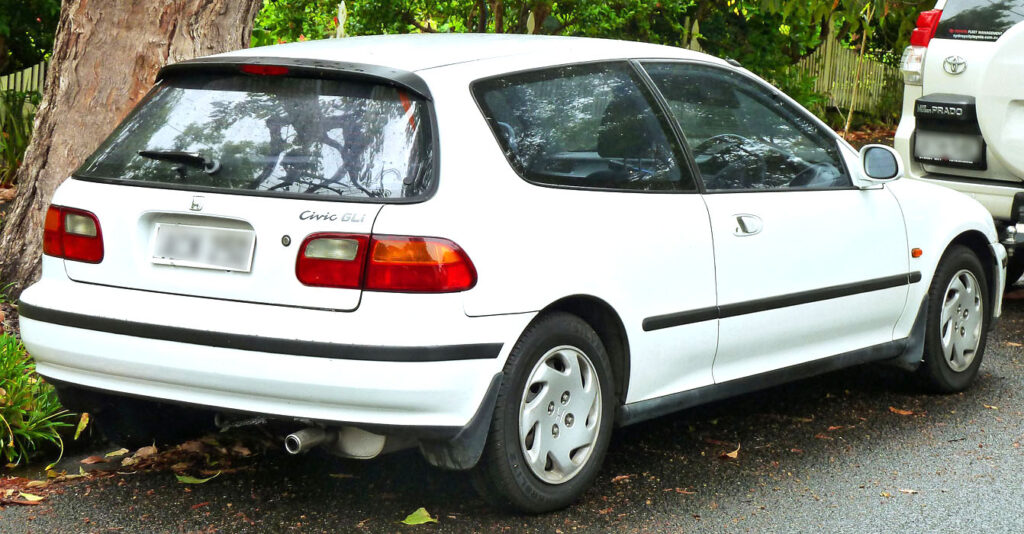

Overall, the fifth generation of the Honda Civic marked another significant advancement in terms of design, technology, and performance. It continued to be a top choice for consumers seeking a dependable and fuel-efficient compact car and laid the foundation for future generations of the Civic, which would further evolve and innovate in the automotive industry.





***Download repair manual FREE***





Manual HONDA CIVIC 1992-1995 (PDF)
Sixth Generation (1996-2000):
From 1996 to 2000, the sixth-generation Civic was produced. This era introduced more modern styling and the Civic HX, a fuel-efficient variant.
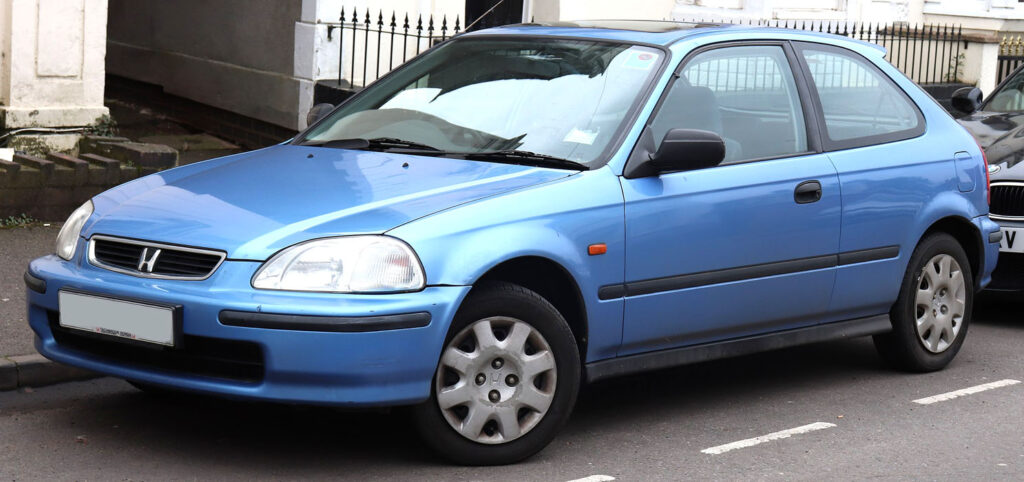

The sixth generation of the Honda Civic was produced from 1996 to 2000. Here are some key details about this generation:
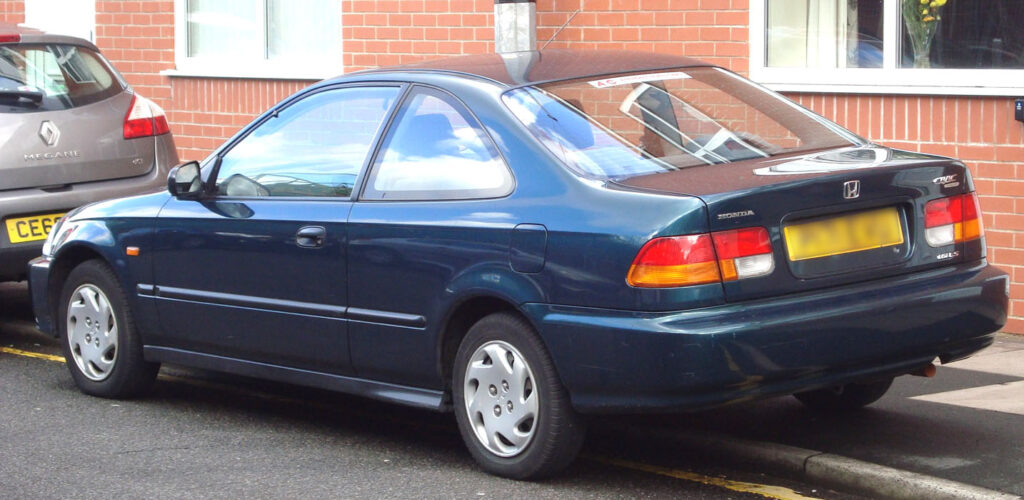

- Redesigned Exterior: The sixth-generation Civic featured a more contemporary and streamlined exterior design compared to its predecessor. It had a smoother and more rounded appearance.
- Body Styles: This generation was available in various body styles, including two-door and four-door sedans, a three-door hatchback, and a two-door coupe.
- Engines: Engine options included a range of four-cylinder engines, such as a 1.5-liter, a 1.6-liter, and more powerful VTEC (Variable Valve Timing and Lift Electronic Control) variants.
- Transmission: Both manual and automatic transmissions were available, providing options for buyers.
- Fuel Efficiency: The sixth-generation Civic continued to emphasize fuel efficiency and offered competitive gas mileage.
- Interior: The interior of this generation featured improved materials and a more ergonomic design. It provided a comfortable and spacious cabin for passengers.
- Safety: Safety features continued to evolve, with some models offering dual airbags, anti-lock brakes (ABS), and improved structural safety.
- Technology: Honda introduced technological advancements, including the availability of VTEC engines that improved both performance and fuel efficiency.
- Global Success: The sixth-generation Civic remained popular in both domestic and international markets, further establishing Honda’s global presence.
- Innovations: This generation continued to feature innovations like double-wishbone suspension for improved handling and ride comfort.
- Special Models: Honda offered sportier variants of the Civic during this generation, including the Civic Si, which was known for its performance enhancements.
- Legacy: The sixth-generation Civic continued to uphold Honda’s reputation for producing reliable, efficient, and well-designed compact cars. It appealed to a wide range of consumers and contributed to the Civic’s enduring popularity.
- Environmental Focus: During this generation, Honda introduced the Civic GX, a natural gas-powered variant, showcasing Honda’s commitment to environmentally friendly technology.
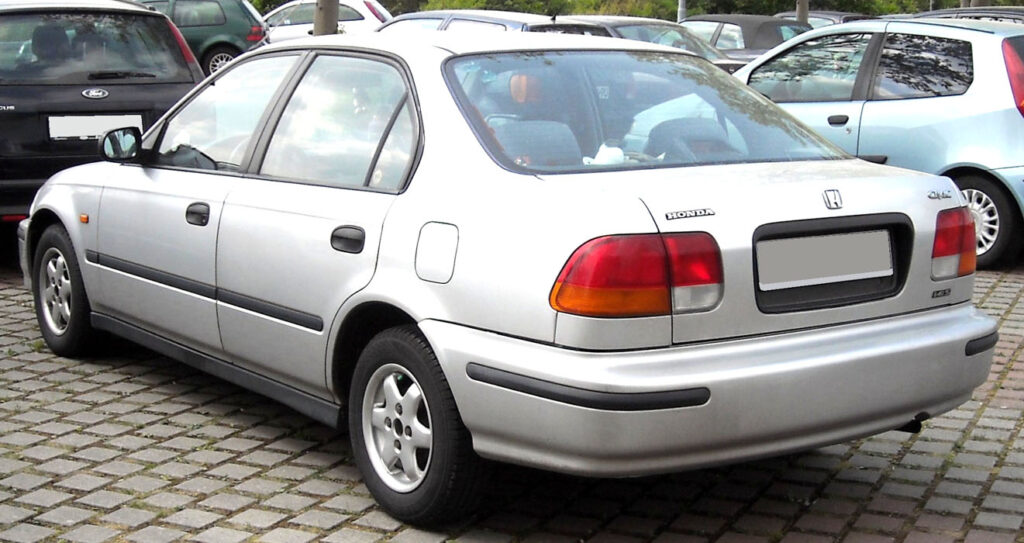

The sixth generation of the Honda Civic marked another significant step forward in terms of design, technology, and performance. It continued to be a top choice for consumers seeking a dependable and fuel-efficient compact car and laid the groundwork for future generations of the Civic, which would continue to innovate and adapt to changing automotive trends.





***Download repair manual FREE***





Manual Honda Civic (1996-1998) (PDF)
Seventh Generation (2001-2005):
The seventh-generation Civic was produced from 2001 to 2005 and featured a redesign. It included the Civic Hybrid, the first mainstream hybrid car.
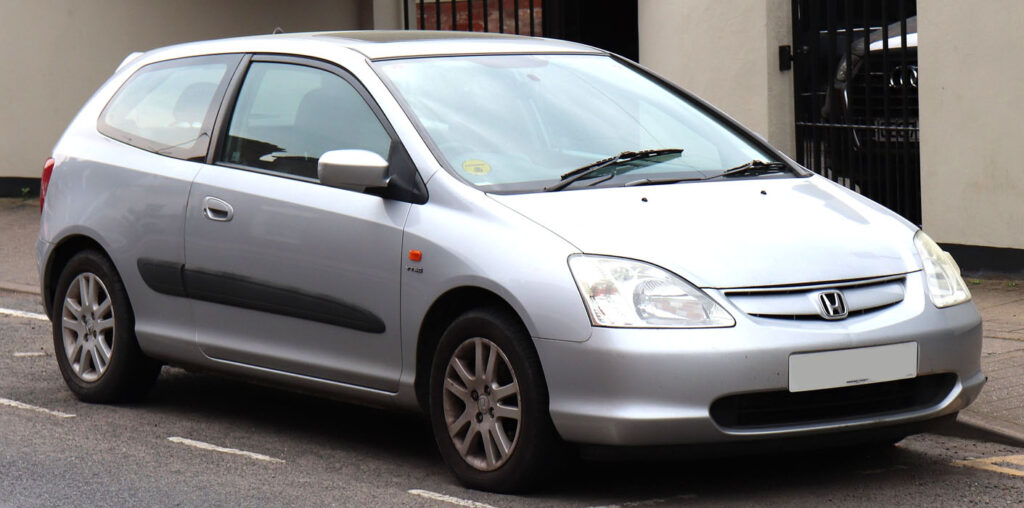

The seventh generation of the Honda Civic was produced from 2001 to 2005. Here are some key details about this generation:
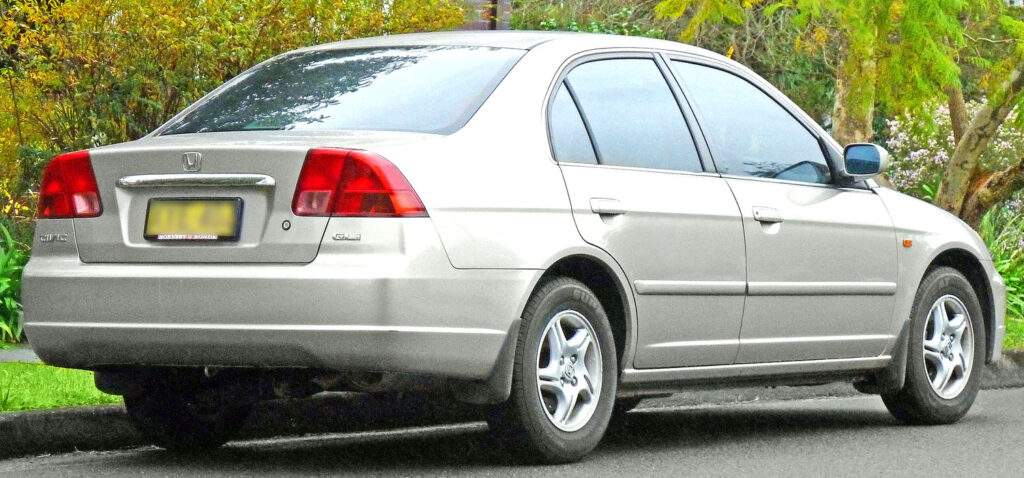

- Redesigned Exterior: The seventh-generation Civic underwent a significant redesign with a more modern and aerodynamic exterior compared to its predecessor. It featured a sleek and contemporary appearance.
- Body Styles: This generation was available in various body styles, including two-door and four-door sedans, a three-door hatchback, and a two-door coupe.
- Engines: Engine options included a range of four-cylinder engines, such as a 1.7-liter and a more powerful 2.0-liter engine in some models.
- Transmission: Both manual and automatic transmissions were available, providing choices for buyers.
- Fuel Efficiency: Fuel efficiency continued to be a priority, and the seventh-generation Civic offered competitive gas mileage.
- Interior: The interior of this generation featured improved materials and a more user-friendly design. It provided a comfortable and well-appointed cabin for passengers.
- Safety: Safety features advanced during this generation, with some models offering side airbags, anti-lock brakes (ABS), and improved structural safety.
- Technology: Honda introduced technological advancements, including an available navigation system and improvements in engine management for better performance and fuel efficiency.
- Global Success: The seventh-generation Civic remained popular in both domestic and international markets, further solidifying Honda’s global presence.
- Environmental Focus: During this generation, Honda introduced the Civic Hybrid, a gasoline-electric hybrid variant, showcasing Honda’s commitment to eco-friendly technology.
- Special Models: Honda offered sportier variants of the Civic during this generation, including the Civic Si, known for its performance enhancements.
- Legacy: The seventh-generation Civic continued to uphold Honda’s reputation for producing reliable, efficient, and well-designed compact cars. It appealed to a wide range of consumers and contributed to the Civic’s enduring popularity.
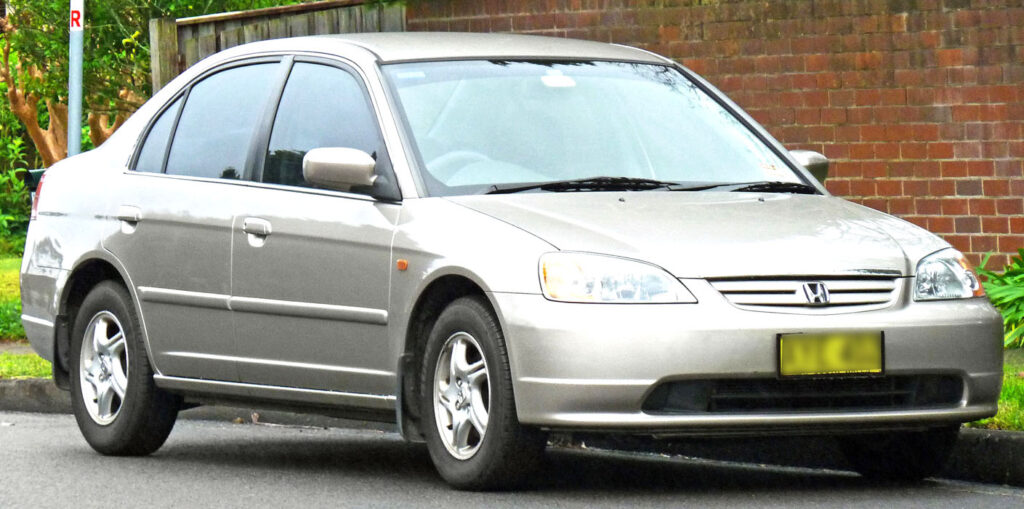

This generation of the Honda Civic marked another significant leap forward in terms of design, technology, and safety. It continued to be a top choice for consumers seeking a dependable and fuel-efficient compact car and showcased Honda’s commitment to innovation and environmental sustainability with the introduction of the Civic Hybrid.
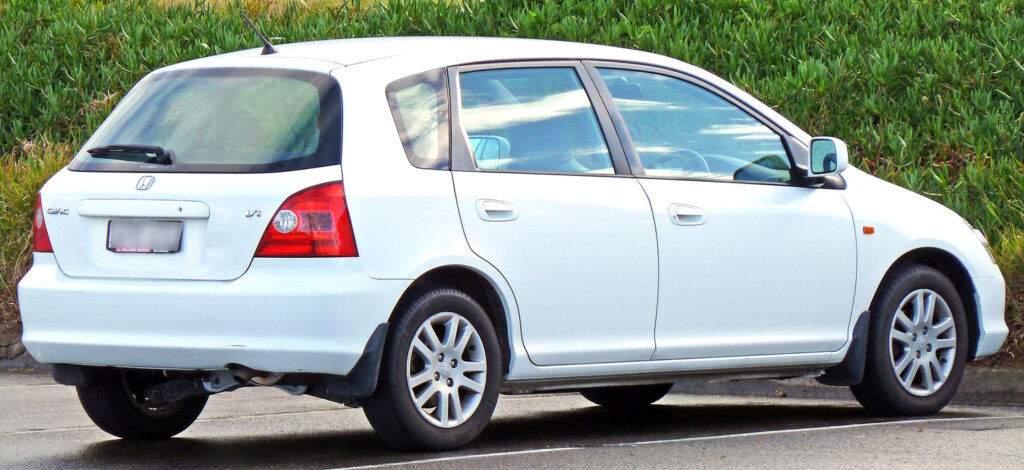

Eighth Generation (2006-2011):
This generation ran from 2006 to 2011 and offered a wide range of body styles and trims, including the sporty Civic Si.
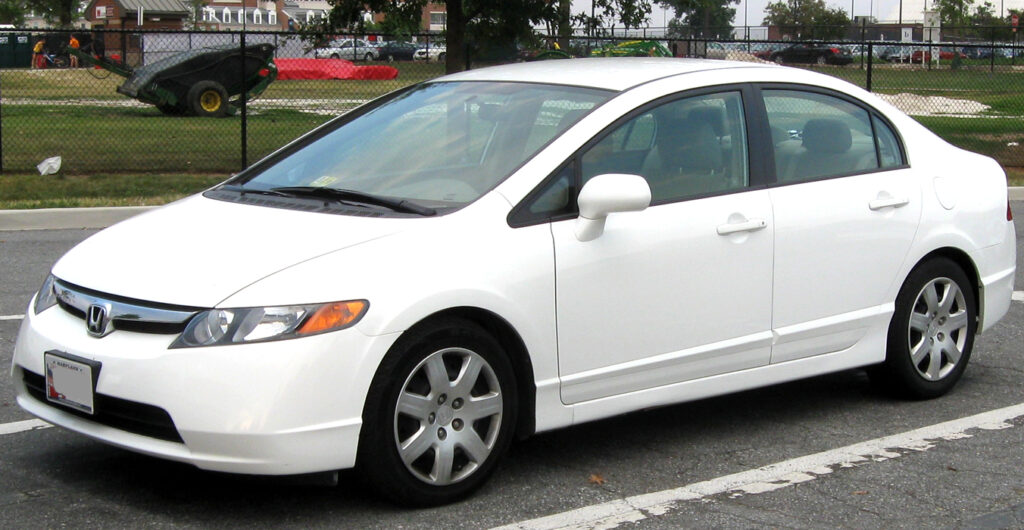

The eighth generation of the Honda Civic was produced from 2006 to 2011. Here are some key details about this generation:
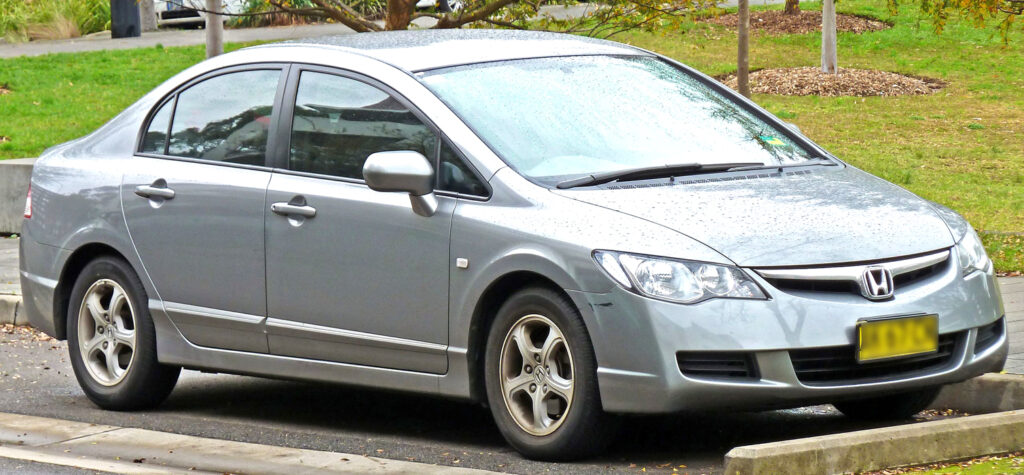

- Redesigned Exterior: The eighth-generation Civic featured a more futuristic and aerodynamic exterior design compared to its predecessor. It had a sleek and angular appearance.
- Body Styles: This generation was available in various body styles, including two-door and four-door sedans, a three-door hatchback (in some markets), and a two-door coupe.
- Engines: Engine options included a range of four-cylinder engines, such as a 1.8-liter and a more powerful 2.0-liter engine in some models. A hybrid variant, the Civic Hybrid, was also available.
- Transmission: Both manual and automatic transmissions were available, offering choices for buyers.
- Fuel Efficiency: Fuel efficiency continued to be a priority, and the eighth-generation Civic offered competitive gas mileage, especially with the Civic Hybrid model.
- Interior: The interior of this generation featured improved materials, a more contemporary design, and enhanced cabin space. It provided a comfortable and well-appointed environment for passengers.
- Safety: Safety features further advanced during this generation, with some models offering side curtain airbags, anti-lock brakes (ABS), stability control, and improved structural safety.
- Technology: Honda introduced technological advancements, including an available navigation system, advanced audio systems, and improvements in engine management for better performance and fuel efficiency.
- Global Success: The eighth-generation Civic remained popular in both domestic and international markets, contributing to Honda’s global presence.
- Environmental Focus: The Civic Hybrid variant continued to showcase Honda’s commitment to eco-friendly technology, offering improved fuel economy and reduced emissions.
- Special Models: The Civic Si, a sportier variant known for its performance enhancements, continued to be available in this generation.
- Legacy: The eighth-generation Civic continued to uphold Honda’s reputation for producing reliable, efficient, and well-designed compact cars. It appealed to a wide range of consumers and showcased Honda’s dedication to innovation and environmental responsibility.
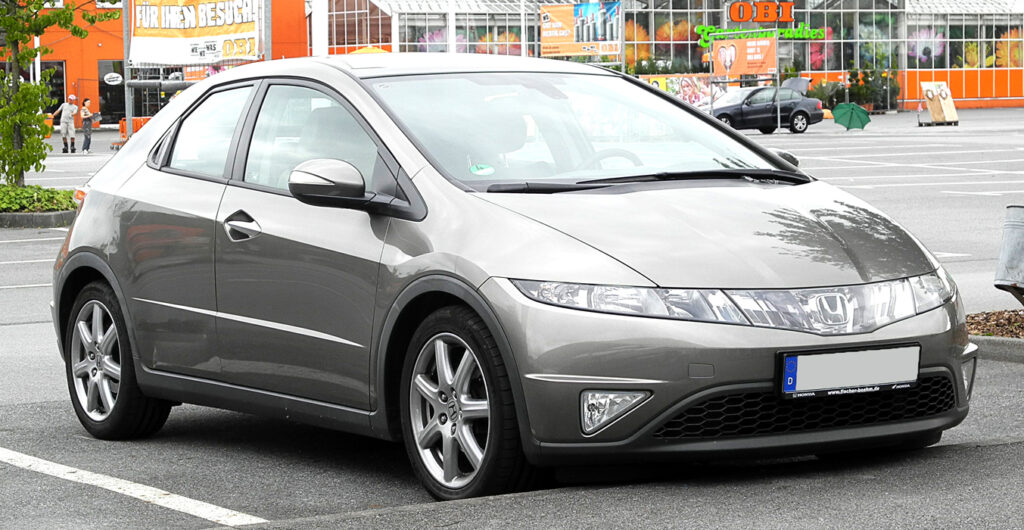

This generation of the Honda Civic marked another significant leap forward in terms of design, technology, safety, and environmental sustainability. It continued to be a top choice for consumers seeking a dependable and fuel-efficient compact car while offering a range of options to suit various preferences and needs.





***Download repair manual FREE***





Manual Honda Civic (2006-2009) (PDF)
คู่มือถอดประกอบเครื่องยนต์ HONDA CIVIC FD ปี 2006-2012 (Th-ภาษาไทย)(PDF)
Ninth Generation (2012-2015):
From 2012 to 2015, Honda produced the ninth-generation Civic. It saw a refresh in 2013 and included a variety of models.
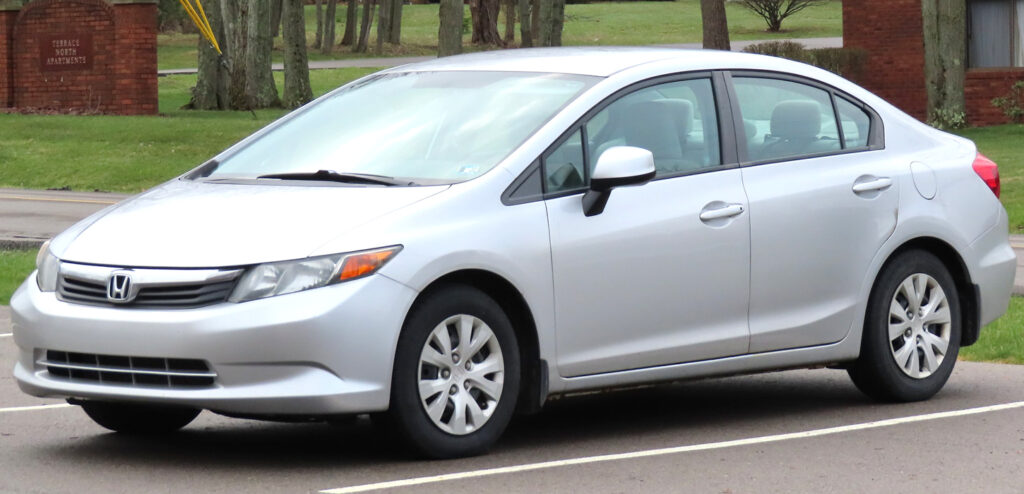

The ninth generation of the Honda Civic was produced from 2012 to 2015. Here are some key details about this generation:
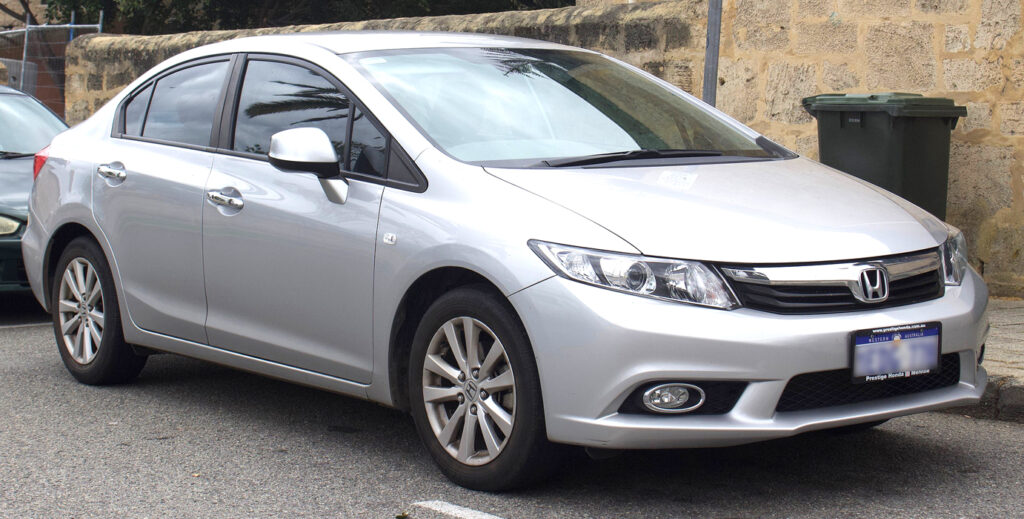

- Redesigned Exterior: The ninth-generation Civic received a restyled exterior that aimed for a more contemporary and refined look compared to its predecessor. It featured smoother lines and a sleeker profile.
- Body Styles: This generation was available in various body styles, including two-door and four-door sedans, and a two-door coupe. The hatchback body style was not available in this generation in North America.
- Engines: Engine options included a range of four-cylinder engines, such as a 1.8-liter and a more powerful 2.4-liter engine in some models. A hybrid variant, the Civic Hybrid, was also available.
- Transmission: Both manual and automatic transmissions were available, providing options for buyers.
- Fuel Efficiency: Fuel efficiency remained a priority, and the ninth-generation Civic continued to offer competitive gas mileage, especially with the Civic Hybrid model.
- Interior: The interior of this generation featured improvements in materials and build quality, providing a more comfortable and refined cabin for passengers. The dashboard and controls were redesigned for better ergonomics.
- Safety: Safety features continued to evolve, with some models offering features like a rearview camera, lane departure warning, forward collision warning, and improved structural safety.
- Technology: Honda introduced technological advancements, including an available touchscreen infotainment system, navigation system, and enhanced audio options.
- Global Success: The ninth-generation Civic remained popular in both domestic and international markets, contributing to Honda’s global presence.
- Environmental Focus: The Civic Hybrid variant continued to showcase Honda’s commitment to eco-friendly technology, offering improved fuel economy and reduced emissions.
- Special Models: The Civic Si, a sportier variant known for its performance enhancements, continued to be available in this generation.
- Legacy: The ninth-generation Civic continued to uphold Honda’s reputation for producing reliable, efficient, and well-designed compact cars. It appealed to a wide range of consumers and showcased Honda’s dedication to innovation, safety, and environmental responsibility.
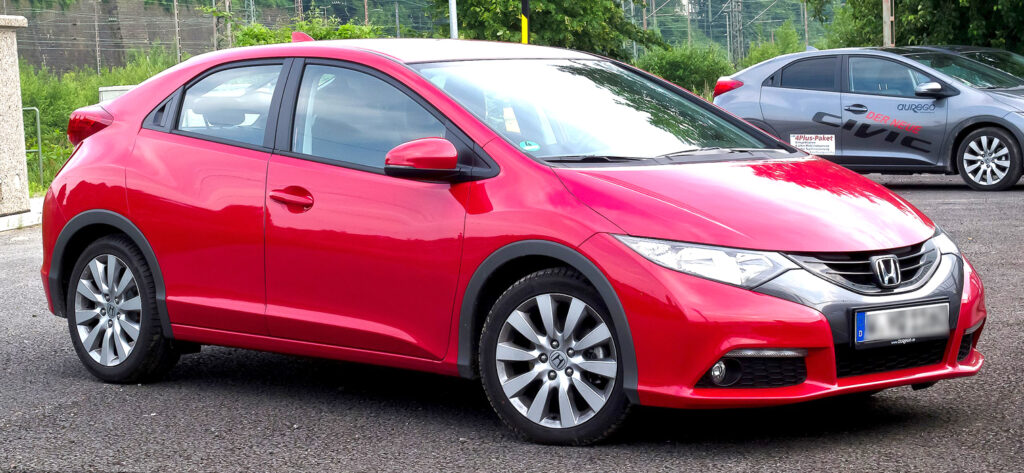

This generation of the Honda Civic maintained the model’s tradition of offering a practical, efficient, and well-rounded compact car while incorporating improvements in design, technology, and safety. It continued to be a popular choice among consumers seeking a dependable and fuel-efficient vehicle.
Tenth Generation (2016-2020):
This generation of the Honda Civic builds on the model’s tradition of offering practicality, efficiency, and reliability while incorporating improvements in design, technology, safety, and performance. It remains a popular choice among consumers seeking a dependable and versatile vehicle.
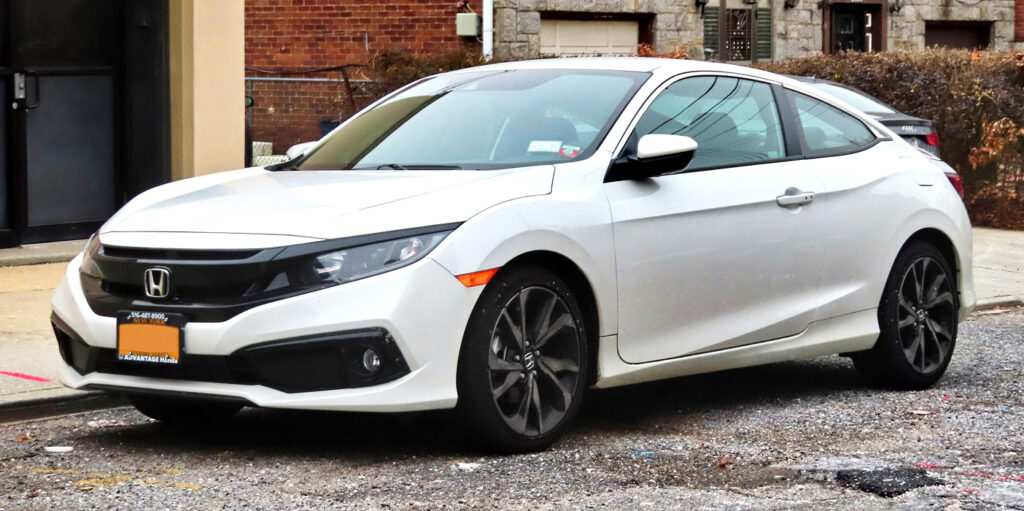

The tenth generation of the Honda Civic began production in 2016 and continues into the present (as of my last knowledge update in September 2021). Here are some key details about this generation:
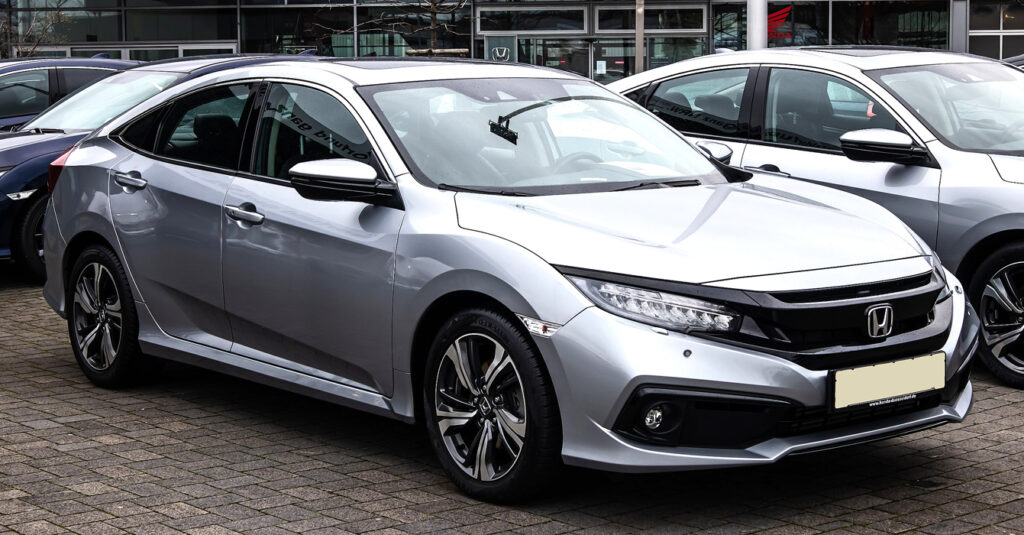

- Redesigned Exterior: The tenth-generation Civic underwent a significant redesign with a more aggressive and sporty exterior compared to its predecessor. It featured bold lines and a more dynamic appearance.
- Body Styles: This generation is available in various body styles, including four-door sedans, five-door hatchbacks, and two-door coupes. The hatchback body style returned to the North American market with this generation.
- Engines: Engine options include a range of four-cylinder engines, including a 2.0-liter and a 1.5-liter turbocharged engine in some models. The Civic Type R, a high-performance variant, is also part of this generation.
- Transmission: Both manual and automatic transmissions are available, providing choices for buyers.
- Fuel Efficiency: Fuel efficiency remains a priority, and the tenth-generation Civic offers competitive gas mileage, especially with the 1.5-liter turbocharged engine and hybrid variants.
- Interior: The interior of this generation features improved materials and build quality, providing a more comfortable and refined cabin for passengers. The dashboard and controls have been redesigned for better ergonomics.
- Safety: Safety features have advanced further in this generation, with some models offering advanced driver assistance systems like adaptive cruise control, lane-keeping assist, and automatic emergency braking.
- Technology: Honda introduced advanced technological features, including an available touchscreen infotainment system with Apple CarPlay and Android Auto compatibility, a digital instrument cluster, and advanced audio options.
- Global Success: The tenth-generation Civic continues to be popular in both domestic and international markets, contributing to Honda’s global presence.
- Environmental Focus: The Civic Hybrid and Civic Natural Gas variants, which emphasize eco-friendly technology, are part of this generation.
- Special Models: The Civic Si and Civic Type R are high-performance variants known for their enhanced handling and powerful engines, catering to driving enthusiasts.
- Legacy: The tenth-generation Civic continues to uphold Honda’s reputation for producing reliable, efficient, and well-designed compact cars. It appeals to a wide range of consumers and showcases Honda’s dedication to innovation, safety, and environmental responsibility.
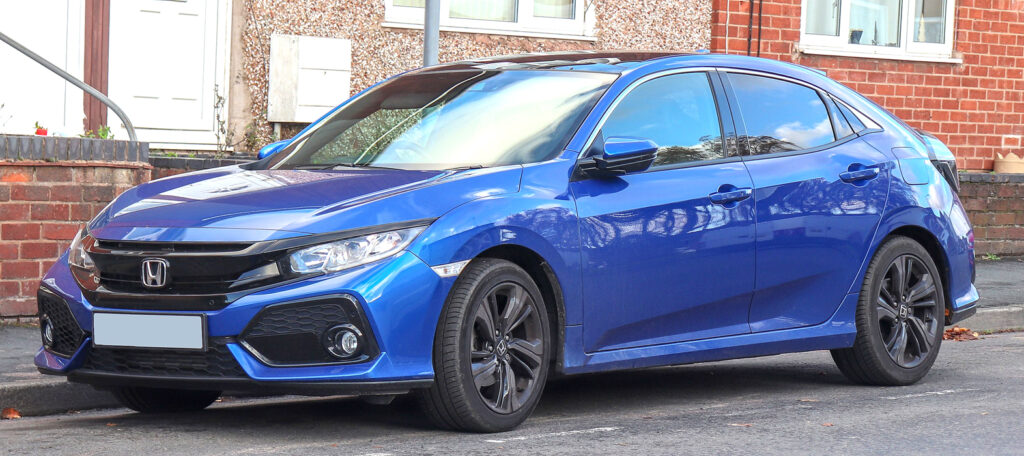

The current-generation Honda Civic, the tenth generation, was introduced in 2016 and continues production to this day. It is available in various body styles and features updated technology and design.
Eleventh generation (2021):
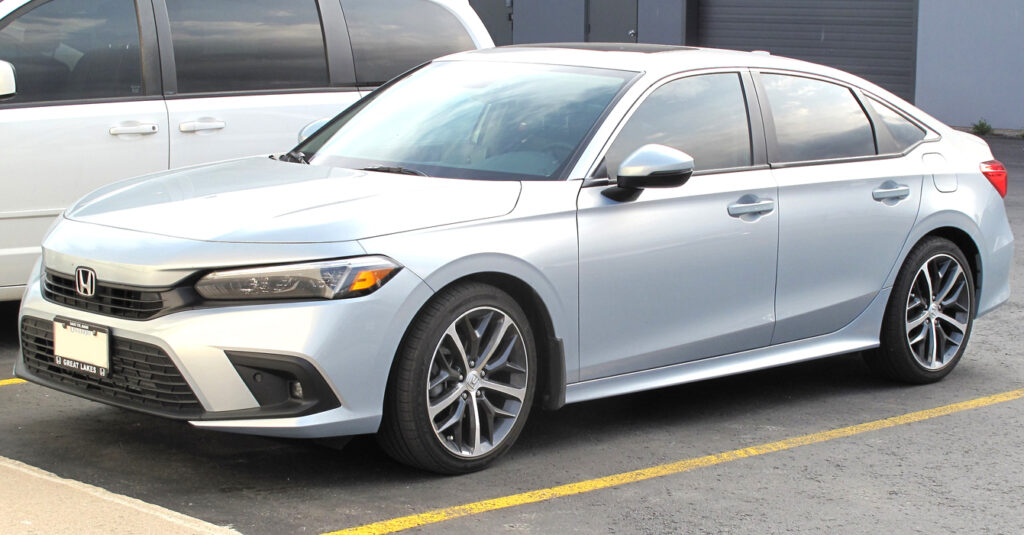

The eleventh-generation Civic sedan was revealed as a prototype in November 2020. The production version was revealed in June 2021, in both sedan and liftback (marketed as the Civic Hatchback) body styles. North American sales began the same month, followed by Southeast Asia in August, Japan and China in September, and Australia and New Zealand in December. European sales began in late 2022. The liftback body style (marketed as the “Civic Hatchback”) was unveiled on June 23, 2021. This generation is also the first Civic since the second-generation not to offer a coupe version due to its declining sales. The sedan is not offered in Japan, Europe or Australia following low sales of its predecessor.
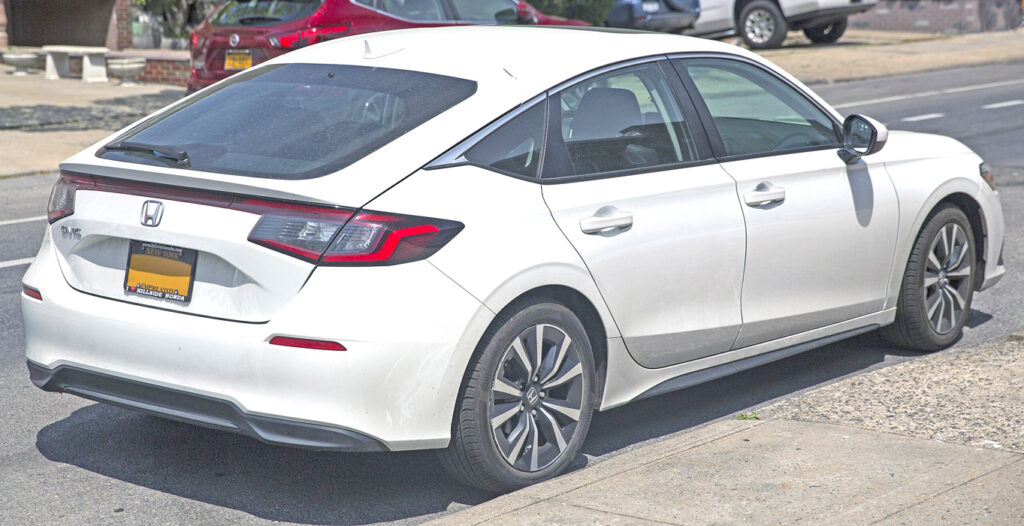

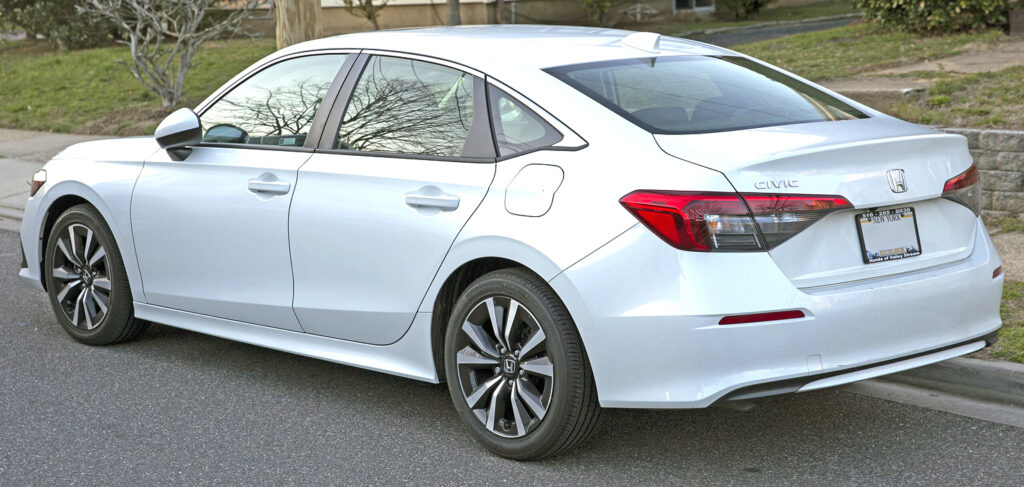

Please note that these production years are approximate, and there may be some variations depending on specific markets and regions. It’s always a good idea to check with your local Honda dealership or official sources for the most up-to-date information on Honda Civic models and production years.

